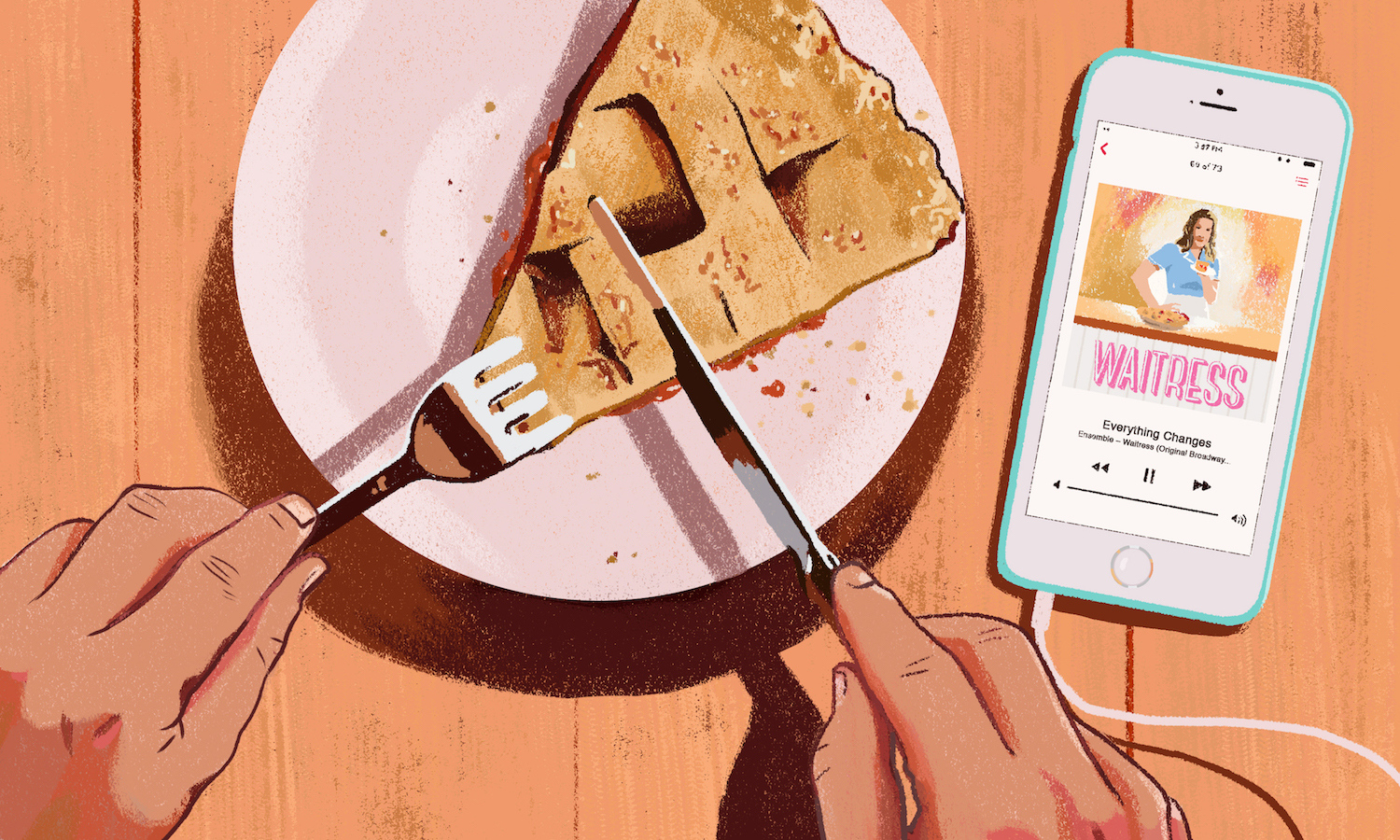
No Garden of Eden at Loyola
Loyola University Chicago may still be celebrating their basketball team’s “historic run,” but not everyone is feeling the school pride.
Non-tenure-track faculty members from the College of Arts and Sciences and English Instruction held a one-day strike on Wednesday April 4 at Loyola’s Rogers Park campus. These Loyola adjuncts have been represented by the Service Employees International Union (SEIU) Local 73 since 2016. After more than two years of negotiations, and 29 negotiation meetings, the union has still not produced its first contract.
SEIU represents 350 part-time and non-tenured full-time faculty members of Loyola’s College of Arts and Sciences, and 10 English Language Learners Program instructors. The two groups voted separately to be represented by SEIU in 2016, but since then have negotiated together. Loyola stated that striking faculty will not receive pay during the strike.
SEIU Local 73 represents an excess of 29 000 workers in Illinois and Indiana; the Loyola strike is one of many such organizing efforts, as universities nationwide rely increasingly on low-paid part-time faculty. SEIU successfully negotiated in 2014 for Tufts University to bring part-time faculty pay up to at least $7300 per course by 2016. At Loyola, the union is seeking a 67 percent pay increase for its part-time faculty.
The strike was held in tandem with a walkout planned by the #NotMyLoyola movement, formed after Loyola students demonstrated on February 24, protesting the school’s intentions to build an $18 million practice facility for basketball and volleyball. During the February demonstration, campus police were recorded assaulting and arresting a black Loyola student and assaulting a Latina student, while a campus administrator observed without intervening. According to Loyola Phoenix, #NotMyLoyola was formed after this event to protest racial discrimination on campus, and stood in solidarity with its picketing professors during the April strike.
Broke Until (Equal) Pay Day
Equal Pay Day fell on Tuesday April 10 this year. An initiative founded in 1996, Equal Pay Day represents how far into the year a woman must work on average to catch up to her male counterpart’s earnings from the previous year. The date fluctuates depending on the previous year’s statistics, but generally lands in April.
Currently, full-time female employees earn, at a national average, 80 cents to the male’s dollar. Women in Illinois earn 79.3 cents on the male dollar, while African American and Hispanic women in the state earn 62.8 cents and 48.5 cents, respectively, on the male dollar. According to projections, Illinois will not close its gender wage gap until 2065, six years after the gap is projected to close nationally (in 2059). The 2003 Illinois Equal Pay Act enforces an equal wage between men and women doing the same or similar work, but the disparity continues.
This year’s Equal Pay Day was marked by Mayor Rahm Emanuel signing an executive order ensuring job applicants in the city of Chicago are not allowed to be asked about their salary history. In the same week a federal appeals court ruled that salary history cannot be used by employers to justify wage disparities between employees. A No Salary History bill, which would ban employers from asking job candidates about their prior salaries state-wide, was vetoed by Governor Bruce Rauner in 2017. However, it was reintroduced and approved by the House this year.
Equal Pay Day Chicago held its eighth annual rally in Daley Plaza. The keynote speaker of the event was Alpana Singh, sommelier, restaurateur and former host of “Check, Please!”. Other speakers included Iliana Mora, the President and CEO of Women Employed; Janice Glenn, Acting Director of Illinois Department of Human Rights; and Mona Noriega, Commissioner of the Chicago Commission of Human Relations.
Recent female college graduates on average earn 6.6 percent less in their first jobs than recent male college graduates. This Vox article explains the pay gap and how it accentuates over time. Also see detailed 2018 statistics generated by PayScale here.
4/20 Highs and Lows
Weed Day is Friday April 20. The date has become associated with the bitter herb because the number 420 is a numerical code for marijuana.
There are a range of theories as to how 420 gained its weed status. According to CNN, the number likely started as a code amongst a group of high school friends in Marin County California. These friends called themselves the Waldos and met at 4:20p.m. every day to get high. 4:20p.m. was ideal because it was after school let out and before parents got home from work.
The infamous Columbine High School shooting also took place on April 20, in 1999. This year will be the shooting’s 19th anniversary. In the shooting’s aftermath, many media outlets speculated that April 20 was chosen by the shooters as the date Adolf Hitler was born.
Ridgefield High School sophomore Lane Murdock has planned a walkout for April 20, protesting the lack of progress in gun control legislation. “Nothing has changed since Columbine”, the Change.org petition reads.
Murdock has partnered with Indivisible—a non-profit organization that supports grassroots protest movements — and a number of her peers to organize a guide for young activists on April 20. The plan is for high school students to walk out of their classrooms wearing orange at 10:00a.m. and first stand in silence for 17 minutes in honor of the 17 students who were killed at Marjory Stoneman Douglas High School in Parkland, Florida, on February 14. Orange was chosen because it is the color of hunter vests, a color that means “don’t shoot”.
This walk-out follows a number of successful anti-gun violence demonstrations that took place in March. Thousands of students in Chicago participated in the March 14 walk-out, while an estimated 85 000 Chicagoans participated in March for Our Lives on March 24. “We are the students, we are the victims, we are change, fight gun violence now!” Murdock’s Change.org petition states.
Find an April 20 school walkout near you here.
April is Sexual Assault Awareness Month
School of the Art Institute of Chicago’s Sexual Assault Awareness Committee has planned a range of programs for students, staff and faculty during the month of April to address the issue of sexual assault. According to the Committee’s press release, the events will strive to “create a culture of mutual respect, equality, safety, and a community free from sexual violence.”
As part of this schedule of events, SAIC will host its first Take Back the Night rally, including a march, a keynote lecture, and a performance by Scheherazade Tillet (MA 2003). For Standing Silent Witness the following day, SAIC staff, students, and faculty will march from the LeRoy Neiman Center to Federal Plaza, participating in an hour of silence upon arrival in protest of the silencing of sexual violence survivors.Visit SAIC’s Stop Sexual Violence webpage for a full list of events, as well as the school’s policies and resources.
Take Back the Night will be held on Thursday, April 26, 7:00p.m. at the Columbus Drive Building, 280 S. Columbus Dr.
Standing Silent Witness will begin on Friday, April 27, 12:00p.m. at the LeRoy Neiman Center, 37 South Wabash Avenue. It will travel to Federal Plaza, 230 South Dearborn Street.
Seeing Seating
“The Art of Seating: 200 Years of American Design” opened at The Richard H. Driehaus Museum on February 10. The exhibition, set in the lush late-19th-century architecture of the museum, presents 37 examples of American chairs created between 1810 and 2010.
According to the museum’s website, the designs featured in the exhibition represent the historical, cultural and social trends of the country. Iconic designs by legends such as Frank Lloyd Wright, Frank Gehry and Isamu Noguchi are included in the stunning collection.
The museum building was the historical home of the Nickerson and Fisher families of Chicago. A selection of chairs made between 1910 and 2017 are available for active participation in the “The Act of Sitting” Lounge. The lounge’s chairs include an iconic design by Charles and Ray Eames that will look very familiar to those students who regularly visit MacLean’s 13th floor.
The exhibition will remain on view until August 12.
UChicago Medicine to Begin Trauma Services Starting May 1
The Illinois Department of Public Health (IDPH) has approved UChicago Medicine’s designation as a level one adult trauma center.
UChicago Medicine stopped offering adult trauma care in 1988, after deciding that the workload from its trauma department impeded the center’s focus on complex cases. Michael Reese Hospital in Bronzeville closed its trauma center in 1991. Since then, there has been no source of adult trauma care on Chicago’s South Side.
In 2010, protests demanding University of Chicago reinstate its trauma center were sparked after 18-year-old activist Damian Turner was shot on 61st Street and Cottage Grove — only three blocks away from UChicago Medicine. He had to be driven to Northwestern Memorial Hospital—the nearest hospital that provided level one trauma center services — where he was pronounced dead on arrival. The ride to the hospital took 27 minutes.
Turner founded student activist group Fearless Leading by the Youth (FLY) and was an active participant in Southside Together Organising for Power (STOP) events. He was two years too old for UChicago’s pediatric trauma center, which handles between 400 and 500 cases a year.
Plans to reinstate UChicago Medicine’s adult trauma services were initiated in December 2015, replacing a joint proposal announced in September 2015 between UChicago Medicine and Sinai Health System to allocate the trauma center to Holy Cross Hospital.
The trauma center is the first step in a three-part plan to improve the scope of UChicago Medicine’s services. A cancer care center (step two) is underway, and a new emergency center (step three) is being planned.
The trauma center will include transitional services such as outpatient psychiatric, behavioral health, and social recovery care. The program officially begins at 8:00a.m. on May 1.







